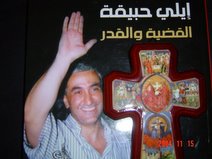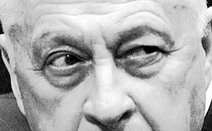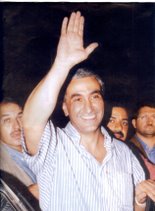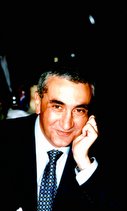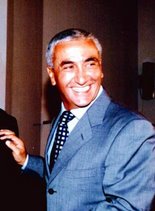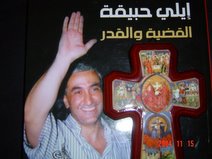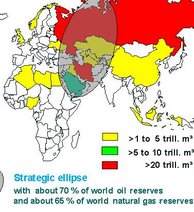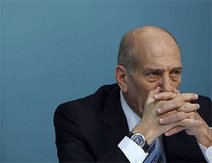
"Let me issue and control a nation's money and I care not who writes its laws." (Mayer Amschel Rothschild)
97 years ago today was a true day of infamy. One of the darkest traitors in American history, Woodrow Wilson, signed the Federal Reserve Act. Only those today who still benefit from the greatest theft scheme in our history would dare to celebrate the crimes. The real history remains hidden to most. Eustace Mullins should be required reading for all who value truth.
Secrets of the Federal Reserve
by Eustace Mullins
Table of Contents
Foreword
In 1949, while I was visiting Ezra Pound who was a political prisoner at St. Elizabeth's Hospital, Washington, D.C. Dr. Pound asked me if I had ever heard of the Federal Reserve System. I replied that I had not, as of the age of 25. He then showed me a ten dollar bill marked "Federal Reserve Note" and asked me if I would do some research at the Library of Congress on the Federal Reserve System which had issued this bill. Pound was unable to go to the Library himself, as he was being held without trial as a political prisoner by the United States government. After he was denied broadcasting time in the U.S., Dr. Pound broadcast from Italy in an effort to persuade people of the United States not to enter World War II. Franklin D. Roosevelt had personally ordered Pound's indictment, spurred by the demands of his three personal assistants, Harry Dexter White, Lauchlin Currie, and Alger Hiss, all of whom were subsequently identified as being connected with Communist espionage.
I had no interest in money or banking as a subject, because I was working on a novel. Pound offered to supplement my income by ten dollars a week for a few weeks. My initial research revealed evidence of an international banking group which had secretly planned the writing of the Federal Reserve Act and Congress' enactment of the plan into law. These findings confirmed what Pound had long suspected. He said, "You must work on it as a detective story." I was fortunate in having my research at the Library of Congress directed by a prominent scholar, George Stimpson, founder of the National Press Club, who was described by The New York Times of September 28, 1952: "Beloved by Washington newspapermen as 'our walking Library of Congress', Mr. Stimpson was a highly regarded reference source in the Capitol. Government officials, Congressmen and reporters went to him for information on any subject."
I did research four hours each day at the Library of Congress, and went to St. Elizabeth's Hospital in the afternoon. Pound and I went over the previous day's notes. I then had dinner with George Stimpson at Scholl's Cafeteria while he went over my material, and I then went back to my room to type up the corrected notes. Both Stimpson and Pound made many suggestions in guiding me in a field in which I had no previous experience. When Pound's resources ran low, I applied to the Guggenheim Foundation, Huntington Hartford Foundation, and other foundations to complete my research on the Federal Reserve. Even though my foundation applications were sponsored by the three leading poets of America, Ezra Pound, E.E. Cummings, and Elizabeth Bishop, all of the foundations refused to sponsor this research. I then wrote up my findings to date, and in 1950 began efforts to market this manuscript in New York. Eighteen publishers turned it down without comment, but the nineteenth, Devin Garrity, president of Devin Adair Publishing Company, gave me some friendly advice in his office. "I like your book, but we can't print it," he told me. "Neither can anybody else in New York. Why don't you bring in a prospectus for your novel, and I think we can give you an advance. You may as well forget about getting the Federal Reserve book published. I doubt if it could ever be printed."
This was devastating news, coming after two years of intensive work. I reported back to Pound, and we tried to find a publisher in other parts of the country. After two years of fruitless submissions, the book was published in a small edition in 1952 by two of Pound's disciples, John Kasper and David Horton, using their private funds, under the title Mullins on the Federal Reserve. In 1954, a second edition, with unauthorized alterations, was published in New Jersey, as The Federal Reserve Conspiracy. In 1955, Guido Roeder brought out a German edition in Oberammergau, Germany. The book was seized and the entire edition of 10,000 copies burned by government agents led by Dr. Otto John.
The burning of the book was upheld April 21, 1961 by judge Israel Katz of the Bavarian Supreme Court. The U.S. Government refused to intervene, because U.S. High Commissioner to Germany, James B. Conant (president of Harvard University 1933 to 1953), had approved the initial book burning order. This is the only book which has been burned in Germany since World War II. In 1968 a pirated edition of this book appeared in California. Both the FBI and the U.S. Postal inspectors refused to act, despite numerous complaints from me during the next decade. In 1980 a new German edition appeared. Because the U.S. Government apparently no longer dictated the internal affairs of Germany, the identical book which had been burned in 1955 now circulates in Germany without interference.
I had collaborated on several books with Mr. H.L. Hunt and he suggested that I should continue my long-delayed research on the Federal Reserve and bring out a more definitive version of this book. I had just signed a contract to write the authorized biography of Ezra Pound, and the Federal Reserve book had to be postponed. Mr. Hunt passed away before I could get back to my research, and once again I faced the problem of financing research for the book.
My original book had traced and named the shadowy figures in the United States who planned the Federal Reserve Act. I now discovered that the men whom I exposed in 1952 as the shadowy figures behind the operation of the Federal Reserve System were themselves shadows, the American fronts for the unknown figures who became known as the "London Connection." I found that notwithstanding our successes in the Wars of Independence of 1812 against England, we remained an economic and financial colony of Great Britain. For the first time, we located the original stockholders of the Federal Reserve Banks and traced their parent companies to the London Connection.
This research is substantiated by citations and documentation from hundreds of newspapers, periodicals and books and charts showing blood, marriage, and business relationships. More than a thousand issues of The New York Times on microfilm have been checked not only for original information, but verification of statements from other sources.
It is a truism of the writing profession that a writer has only one book within him. This seems applicable in my case, because I am now in the fifth decade of continuous writing on a single subject, the inside story of the Federal Reserve System. This book was from its inception commissioned and guided by Ezra Pound. Four of his protégés have previously been awarded the Nobel Prize for Literature, William Butler Yeats for his later poetry, James Joyce for "Ulysses", Ernest Hemingway for "The Sun Also Rises", and T.S. Elliot for "The Waste Land". Pound played a major role in the inspiration and in the editing of these works--which leads us to believe that this present work, also inspired by Pound, represents an ongoing literary tradition.
Although this book in its inception was expected to be a tortuous work on economic and monetary techniques, it soon developed into a story of such universal and dramatic appeal that from the outset, Ezra Pound urged me to write it as a detective story, a genre which was invented by my fellow Virginian, Edgar Allan Poe. I believe that the continuous circulation of this book during the past forty years has not only exonerated Ezra Pound for his much condemned political and monetary statements, but also that it has been, and will continue to be, the ultimate weapon against the powerful conspirators who compelled him to serve thirteen and a half years without trial, as a political prisoner held in an insane asylum a la KGB. His earliest vindication came when the government agents who represented the conspirators refused to allow him to testify in his own defense; the second vindication came in 1958 when these same agents dropped all charges against him, and he walked out of St. Elizabeth's Hospital, a free man once more. His third and final vindication is this work, which documents every aspect of his exposure of the ruthless international financiers to whom Ezra Pound became but one more victim, doomed to serve years as the Man in the Iron Mask, because he had dared to alert his fellow-Americans to their furtive acts of treason against all people of the United States.
In my lectures throughout this nation, and in my appearances on many radio and television programs, I have sounded the toxin that the Federal Reserve System is not Federal; it has no reserves; and it is not a system at all, but rather, a criminal syndicate. From November, 1910, when the conspirators met on Jekyll Island, Georgia, to the present time, the machinations of the Federal Reserve bankers have been shrouded in secrecy. Today, that secrecy has cost the American people a three trillion dollar debt, with annual interest payments to these bankers amounting to some three hundred billion dollars per year, sums which stagger the imagination, and which in themselves are ultimately unpayable. Officials of the Federal Reserve System routinely issue remonstrances to the public, much as the Hindu fakir pipes an insistent tune to the dazed cobra which sways its head before him, not to resolve the situation, but to prevent it from striking him. Such was the soothing letter written by Donald J. Winn, Assistant to the Board of Governors in response to an inquiry by a Congressman, the Honorable Norman D. Shumway, on March 10, 1983. Mr. Winn states that "The Federal Reserve System was established by an act of Congress in 1913 and is not a 'private corporation'." On the next page, Mr. Winn continues, "The stock of the Federal Reserve Banks is held entirely by commercial banks that are members of the Federal Reserve System." He offers no explanation as to why the government has never owned a single share of stock in any Federal Reserve Bank, or why the Federal Reserve System is not a "private corporation" when all of its stock is owned by "private corporations".
American history in the twentieth century has recorded the amazing achievements of the Federal Reserve bankers. First, the outbreak of World War I, which was made possible by the funds available from the new central bank of the United States. Second, the Agricultural Depression of 1920. Third, the Black Friday Crash on Wall Street of October, 1929 and the ensuing Great Depression. Fourth, World War II. Fifth, the conversion of the assets of the United States and its citizens from real property to paper assets from 1945 to the present, transforming a victorious America and foremost world power in 1945 to the world's largest debtor nation in 1990. Today, this nation lies in economic ruins, devastated and destitute, in much the same dire straits in which Germany and Japan found themselves in 1945. Will Americans act to rebuild our nation, as Germany and Japan have done when they faced the identical conditions which we now face--or will we continue to be enslaved by the Babylonian debt money system which was set up by the Federal Reserve Act in 1913 to complete our total destruction? This is the only question which we have to answer, and we do not have much time left to answer it.
Because of the depth and the importance of the information which I had developed at the Library of Congress under the tutelage of Ezra Pound, this work became the happy hunting ground for many other would-be historians, who were unable to research this material for themselves. Over the past four decades, I have become accustomed to seeing this material appear in many other books, invariably attributed to other writers, with my name never mentioned. To add insult to injury, not only my material, but even my title has been appropriated, in a massive, if obtuse, work called "Secrets of the Temple--the Federal Reserve". This heavily advertised book received reviews ranging from incredulous to hilarious. Forbes Magazine advised its readers to read their review and save their money, pointing out that "a reader will discover no secrets" and that "This is one of those books whose fanfares far exceed their merit." This was not accidental, as this overblown whitewash of the Federal Reserve bankers was published by the most famous nonbook publisher in the world.
After my initial shock at discovering that the most influential literary personality of the twentieth century, Ezra Pound, was imprisoned in "the Hellhole" in Washington, I immediately wrote for assistance to a Wall Street financier at whose estate I had frequently been a guest. I reminded him that as a patron of the arts, he could not afford to allow Pound to remain in such inhuman captivity. His reply shocked me even more. He wrote back that "your friend can well stay where he is." It was some years before I was able to understand that, for this investment banker and his colleagues, Ezra Pound would always be "the enemy".
Eustace Mullins
Jackson Hole, Wyoming 1991
Also see:
Secrets of the Federal Reserve
by Eustace Mullins
Table of Contents
Foreword
Introduction by Ezra Pound
Chapter One: Jekyll Island
Chapter Two: The Aldrich Plan
Chapter Three: The Federal Reserve Act
Chapter Four: The Federal Advisory Council
Chapter Five: The House of Rothschild
Chapter Six: The London Connection
Chapter Seven: The Hitler Connection
Chapter Eight: World War One
Chapter Nine: The Agricultural Depression
Chapter Ten: The Money Creators
Chapter Eleven: Lord Montagu Norman
Chapter Twelve: The Great Depression
Chapter Thirteen: The 1930's
Chapter Fourteen: Congressional Expose
Appendix
Biographies
Bibliography
Questions and Answers
Foreword
In 1949, while I was visiting Ezra Pound who was a political prisoner at St. Elizabeth's Hospital, Washington, D.C. Dr. Pound asked me if I had ever heard of the Federal Reserve System. I replied that I had not, as of the age of 25. He then showed me a ten dollar bill marked "Federal Reserve Note" and asked me if I would do some research at the Library of Congress on the Federal Reserve System which had issued this bill. Pound was unable to go to the Library himself, as he was being held without trial as a political prisoner by the United States government. After he was denied broadcasting time in the U.S., Dr. Pound broadcast from Italy in an effort to persuade people of the United States not to enter World War II. Franklin D. Roosevelt had personally ordered Pound's indictment, spurred by the demands of his three personal assistants, Harry Dexter White, Lauchlin Currie, and Alger Hiss, all of whom were subsequently identified as being connected with Communist espionage.
I had no interest in money or banking as a subject, because I was working on a novel. Pound offered to supplement my income by ten dollars a week for a few weeks. My initial research revealed evidence of an international banking group which had secretly planned the writing of the Federal Reserve Act and Congress' enactment of the plan into law. These findings confirmed what Pound had long suspected. He said, "You must work on it as a detective story." I was fortunate in having my research at the Library of Congress directed by a prominent scholar, George Stimpson, founder of the National Press Club, who was described by The New York Times of September 28, 1952: "Beloved by Washington newspapermen as 'our walking Library of Congress', Mr. Stimpson was a highly regarded reference source in the Capitol. Government officials, Congressmen and reporters went to him for information on any subject."
I did research four hours each day at the Library of Congress, and went to St. Elizabeth's Hospital in the afternoon. Pound and I went over the previous day's notes. I then had dinner with George Stimpson at Scholl's Cafeteria while he went over my material, and I then went back to my room to type up the corrected notes. Both Stimpson and Pound made many suggestions in guiding me in a field in which I had no previous experience. When Pound's resources ran low, I applied to the Guggenheim Foundation, Huntington Hartford Foundation, and other foundations to complete my research on the Federal Reserve. Even though my foundation applications were sponsored by the three leading poets of America, Ezra Pound, E.E. Cummings, and Elizabeth Bishop, all of the foundations refused to sponsor this research. I then wrote up my findings to date, and in 1950 began efforts to market this manuscript in New York. Eighteen publishers turned it down without comment, but the nineteenth, Devin Garrity, president of Devin Adair Publishing Company, gave me some friendly advice in his office. "I like your book, but we can't print it," he told me. "Neither can anybody else in New York. Why don't you bring in a prospectus for your novel, and I think we can give you an advance. You may as well forget about getting the Federal Reserve book published. I doubt if it could ever be printed."
This was devastating news, coming after two years of intensive work. I reported back to Pound, and we tried to find a publisher in other parts of the country. After two years of fruitless submissions, the book was published in a small edition in 1952 by two of Pound's disciples, John Kasper and David Horton, using their private funds, under the title Mullins on the Federal Reserve. In 1954, a second edition, with unauthorized alterations, was published in New Jersey, as The Federal Reserve Conspiracy. In 1955, Guido Roeder brought out a German edition in Oberammergau, Germany. The book was seized and the entire edition of 10,000 copies burned by government agents led by Dr. Otto John.
The burning of the book was upheld April 21, 1961 by judge Israel Katz of the Bavarian Supreme Court. The U.S. Government refused to intervene, because U.S. High Commissioner to Germany, James B. Conant (president of Harvard University 1933 to 1953), had approved the initial book burning order. This is the only book which has been burned in Germany since World War II. In 1968 a pirated edition of this book appeared in California. Both the FBI and the U.S. Postal inspectors refused to act, despite numerous complaints from me during the next decade. In 1980 a new German edition appeared. Because the U.S. Government apparently no longer dictated the internal affairs of Germany, the identical book which had been burned in 1955 now circulates in Germany without interference.
I had collaborated on several books with Mr. H.L. Hunt and he suggested that I should continue my long-delayed research on the Federal Reserve and bring out a more definitive version of this book. I had just signed a contract to write the authorized biography of Ezra Pound, and the Federal Reserve book had to be postponed. Mr. Hunt passed away before I could get back to my research, and once again I faced the problem of financing research for the book.
My original book had traced and named the shadowy figures in the United States who planned the Federal Reserve Act. I now discovered that the men whom I exposed in 1952 as the shadowy figures behind the operation of the Federal Reserve System were themselves shadows, the American fronts for the unknown figures who became known as the "London Connection." I found that notwithstanding our successes in the Wars of Independence of 1812 against England, we remained an economic and financial colony of Great Britain. For the first time, we located the original stockholders of the Federal Reserve Banks and traced their parent companies to the London Connection.
This research is substantiated by citations and documentation from hundreds of newspapers, periodicals and books and charts showing blood, marriage, and business relationships. More than a thousand issues of The New York Times on microfilm have been checked not only for original information, but verification of statements from other sources.
It is a truism of the writing profession that a writer has only one book within him. This seems applicable in my case, because I am now in the fifth decade of continuous writing on a single subject, the inside story of the Federal Reserve System. This book was from its inception commissioned and guided by Ezra Pound. Four of his protégés have previously been awarded the Nobel Prize for Literature, William Butler Yeats for his later poetry, James Joyce for "Ulysses", Ernest Hemingway for "The Sun Also Rises", and T.S. Elliot for "The Waste Land". Pound played a major role in the inspiration and in the editing of these works--which leads us to believe that this present work, also inspired by Pound, represents an ongoing literary tradition.
Although this book in its inception was expected to be a tortuous work on economic and monetary techniques, it soon developed into a story of such universal and dramatic appeal that from the outset, Ezra Pound urged me to write it as a detective story, a genre which was invented by my fellow Virginian, Edgar Allan Poe. I believe that the continuous circulation of this book during the past forty years has not only exonerated Ezra Pound for his much condemned political and monetary statements, but also that it has been, and will continue to be, the ultimate weapon against the powerful conspirators who compelled him to serve thirteen and a half years without trial, as a political prisoner held in an insane asylum a la KGB. His earliest vindication came when the government agents who represented the conspirators refused to allow him to testify in his own defense; the second vindication came in 1958 when these same agents dropped all charges against him, and he walked out of St. Elizabeth's Hospital, a free man once more. His third and final vindication is this work, which documents every aspect of his exposure of the ruthless international financiers to whom Ezra Pound became but one more victim, doomed to serve years as the Man in the Iron Mask, because he had dared to alert his fellow-Americans to their furtive acts of treason against all people of the United States.
In my lectures throughout this nation, and in my appearances on many radio and television programs, I have sounded the toxin that the Federal Reserve System is not Federal; it has no reserves; and it is not a system at all, but rather, a criminal syndicate. From November, 1910, when the conspirators met on Jekyll Island, Georgia, to the present time, the machinations of the Federal Reserve bankers have been shrouded in secrecy. Today, that secrecy has cost the American people a three trillion dollar debt, with annual interest payments to these bankers amounting to some three hundred billion dollars per year, sums which stagger the imagination, and which in themselves are ultimately unpayable. Officials of the Federal Reserve System routinely issue remonstrances to the public, much as the Hindu fakir pipes an insistent tune to the dazed cobra which sways its head before him, not to resolve the situation, but to prevent it from striking him. Such was the soothing letter written by Donald J. Winn, Assistant to the Board of Governors in response to an inquiry by a Congressman, the Honorable Norman D. Shumway, on March 10, 1983. Mr. Winn states that "The Federal Reserve System was established by an act of Congress in 1913 and is not a 'private corporation'." On the next page, Mr. Winn continues, "The stock of the Federal Reserve Banks is held entirely by commercial banks that are members of the Federal Reserve System." He offers no explanation as to why the government has never owned a single share of stock in any Federal Reserve Bank, or why the Federal Reserve System is not a "private corporation" when all of its stock is owned by "private corporations".
American history in the twentieth century has recorded the amazing achievements of the Federal Reserve bankers. First, the outbreak of World War I, which was made possible by the funds available from the new central bank of the United States. Second, the Agricultural Depression of 1920. Third, the Black Friday Crash on Wall Street of October, 1929 and the ensuing Great Depression. Fourth, World War II. Fifth, the conversion of the assets of the United States and its citizens from real property to paper assets from 1945 to the present, transforming a victorious America and foremost world power in 1945 to the world's largest debtor nation in 1990. Today, this nation lies in economic ruins, devastated and destitute, in much the same dire straits in which Germany and Japan found themselves in 1945. Will Americans act to rebuild our nation, as Germany and Japan have done when they faced the identical conditions which we now face--or will we continue to be enslaved by the Babylonian debt money system which was set up by the Federal Reserve Act in 1913 to complete our total destruction? This is the only question which we have to answer, and we do not have much time left to answer it.
Because of the depth and the importance of the information which I had developed at the Library of Congress under the tutelage of Ezra Pound, this work became the happy hunting ground for many other would-be historians, who were unable to research this material for themselves. Over the past four decades, I have become accustomed to seeing this material appear in many other books, invariably attributed to other writers, with my name never mentioned. To add insult to injury, not only my material, but even my title has been appropriated, in a massive, if obtuse, work called "Secrets of the Temple--the Federal Reserve". This heavily advertised book received reviews ranging from incredulous to hilarious. Forbes Magazine advised its readers to read their review and save their money, pointing out that "a reader will discover no secrets" and that "This is one of those books whose fanfares far exceed their merit." This was not accidental, as this overblown whitewash of the Federal Reserve bankers was published by the most famous nonbook publisher in the world.
After my initial shock at discovering that the most influential literary personality of the twentieth century, Ezra Pound, was imprisoned in "the Hellhole" in Washington, I immediately wrote for assistance to a Wall Street financier at whose estate I had frequently been a guest. I reminded him that as a patron of the arts, he could not afford to allow Pound to remain in such inhuman captivity. His reply shocked me even more. He wrote back that "your friend can well stay where he is." It was some years before I was able to understand that, for this investment banker and his colleagues, Ezra Pound would always be "the enemy".
Eustace Mullins
Jackson Hole, Wyoming 1991
Source
PDF version
Also see:
The Secret Criminal Society of the Federal Reserve
The Federal Reserve's War Against the Human Race
The Federal Reserve: History and Conspiracy
Jeckyll Island and the Federal Reserve
How and Why International Bankers Made War
The Jefferson of Our Time
The US Income-tax
How the Federal Reserve Runs the US by Stephen Lendman 5 parts
Central Banking - background
The Creature from Jekyll Island mp3
Money Masters - video
The Federal Reserve: The Greatest Scam in History?
What Caused the Great Depression of the 1930's
Banks that hold the controlling stock in the Federal Reserve Corporation:
Rothschild Banks of London and Berlin, Lazard Brothers Bank of Paris, Israel Moses Sieff Banks of Italy
Warburg Bank of Hamburg and Amsterdam, Lehman Brothers Bank of New York, Kuhn Loeb Bank of New York Chase Manhattan Bank of New York, Goldman Sachs Bank of New York....
Rothschild Banks of London and Berlin, Lazard Brothers Bank of Paris, Israel Moses Sieff Banks of Italy
Warburg Bank of Hamburg and Amsterdam, Lehman Brothers Bank of New York, Kuhn Loeb Bank of New York Chase Manhattan Bank of New York, Goldman Sachs Bank of New York....



